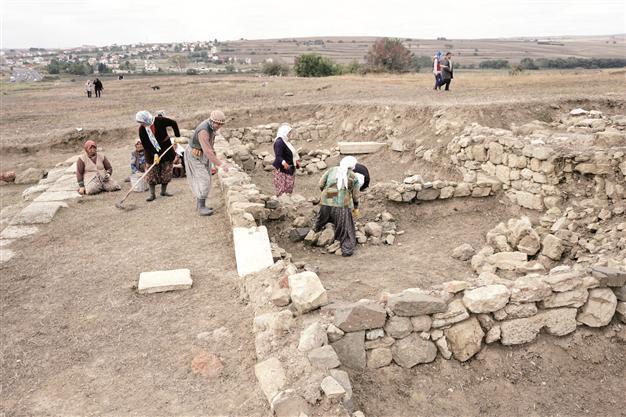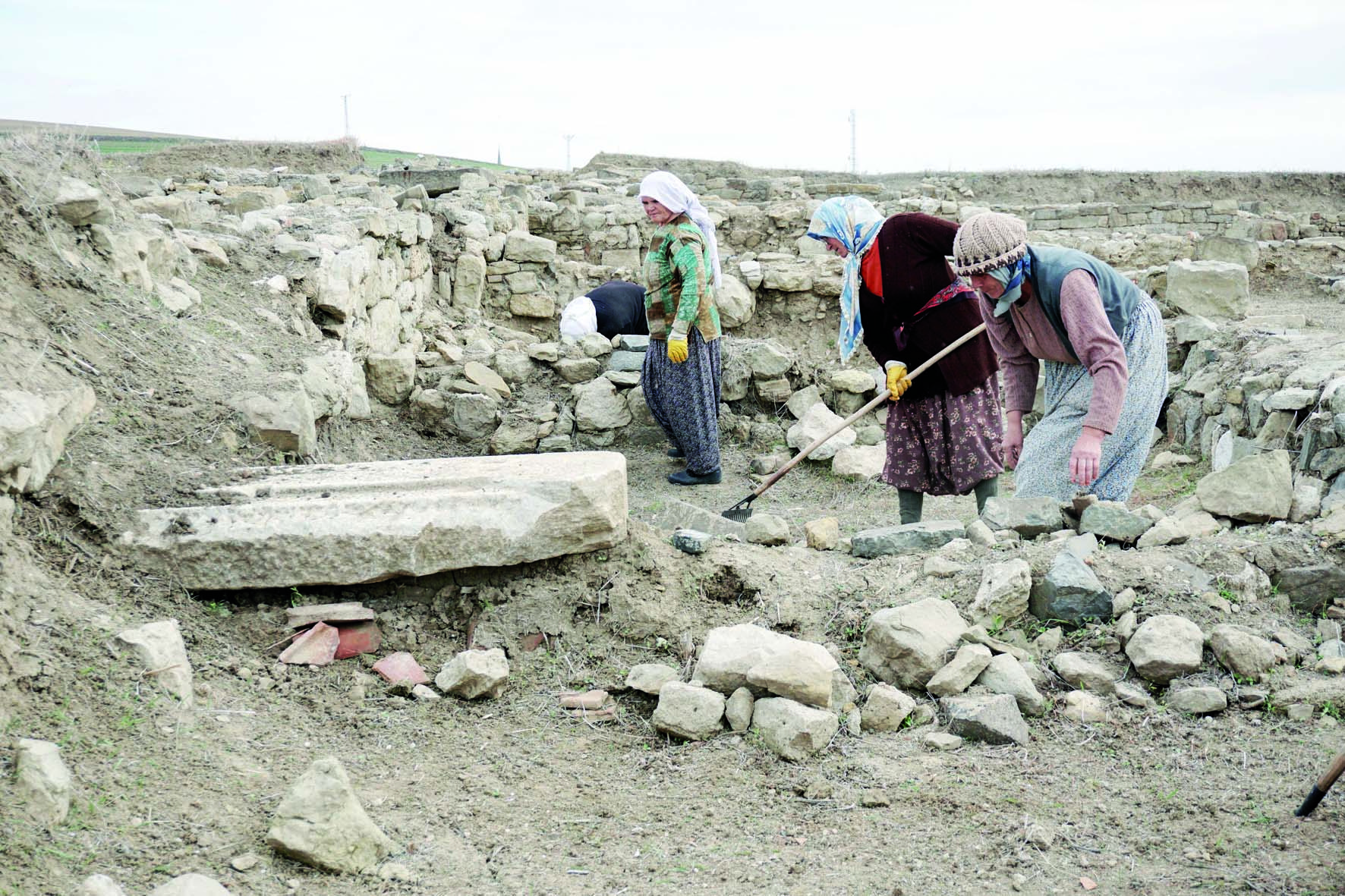Treasure hunters destroying precious Thracian relics in Turkey
TEKİRDAĞ - Anadolu Agency

AA Photos
Crucial findings in ancient Heraion-Teikhos in Turkey’s Thracian province of Tekirdağ, which illuminates the life of the ancient Thracian people, are being threatened by illegal treasure hunters, according to the head of the excavations in the field.Studies at Heraion-Teikhos have been continuing since 2000 and the site was a private plot until last year, which helped to protect the area, said Prof. Neşe Atik, the head of the archaeology department at Namık Kemal University.
“This site became a target for illegal diggers immediately when it became public,” she told Anadolu Agency.
“This year we have spent most of our efforts in protection,” she said.
However, the cleaned-up field still requires a barbed wire fence, following permission from state officials.
Looters have been ignorantly looking for treasures at the site under stones, Atik said.
During a one-month break in excavations for a geophysics study, illegal treasure hunters dug a one-and-a-half meter deep hole under a stone, she exemplified.
“As they have no knowledge, when they see an amphora [a large jug], they think it is filled with gold,” she said.

Earlier this year, a 2000-year-old health center was discovered in the 5000-year-old city.
There was an underground water system in the city which carried water to the health center and amphorae were used to distill the water, the excavation head said.
“We had dig out a large amphora used for such a purpose which was totally empty, but they [treasure hunters] broke it into pieces,” she said.
The treasure hunters are also pulling down the antique walls at the site in search for valuable materials, she said, complaining this was causing them lose energy and time, as the illegal attacks were leaving nothing to display.
The desperate academic wished nothing significant would happen in the short period of time before the fence is put up.
Their priority was scientific findings but the team is also looking to turn the site into a tourism attraction center with enough material to display, she said. Local women have been taking part in the excavation there for 10 years.
The Thracians were a group of Indo-European tribes inhabiting a large area in Southeastern Europe. They spoke the Thracian language - a scarcely attested branch of the Indo-European language family.
Famous historic figure Spartacus was a Thracian enslaved by Rome who led a large slave uprising in Southern Italy in 73–71 B.C. and defeated several Roman legions in what is known as the Third Servile War.
















